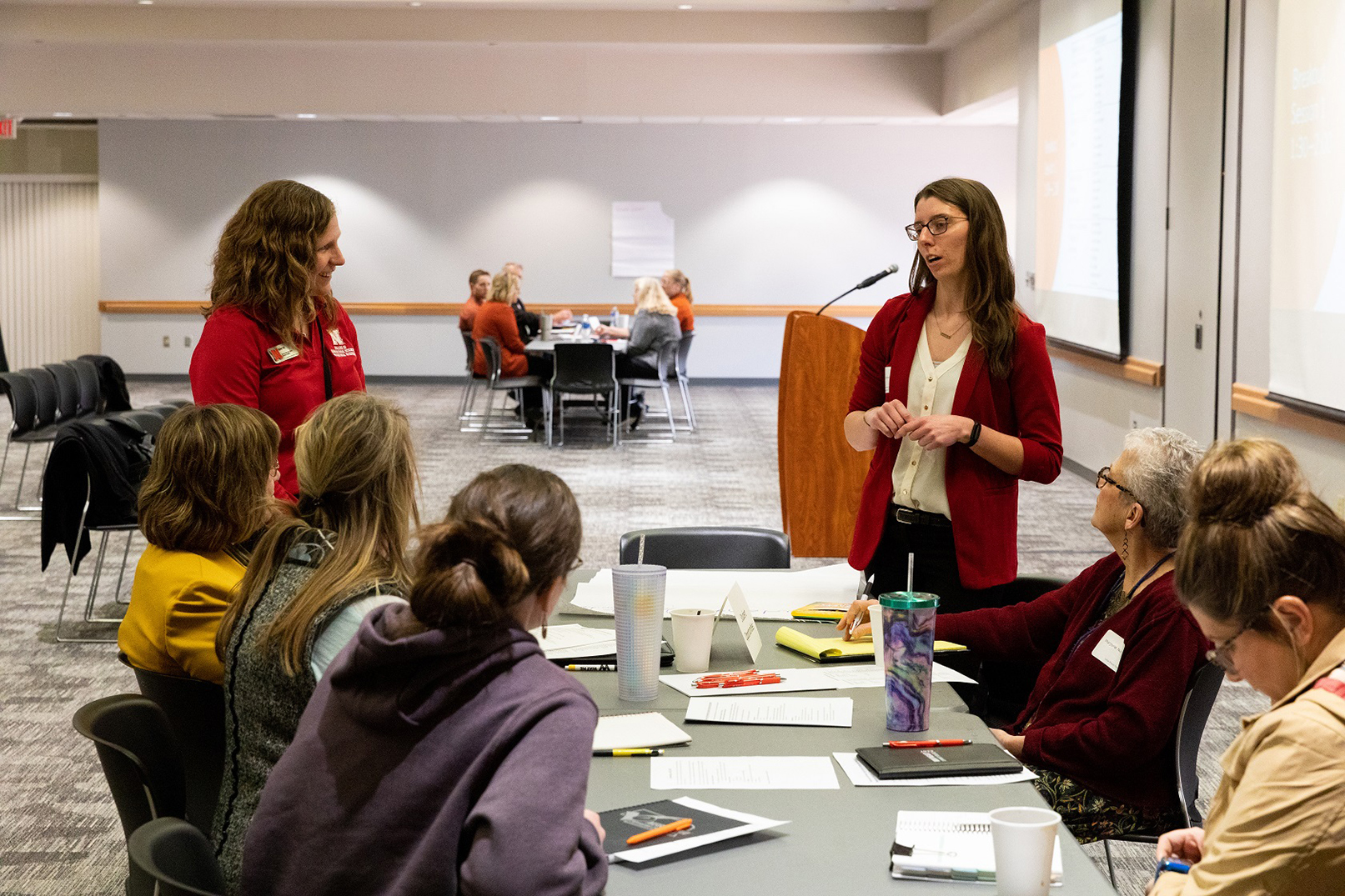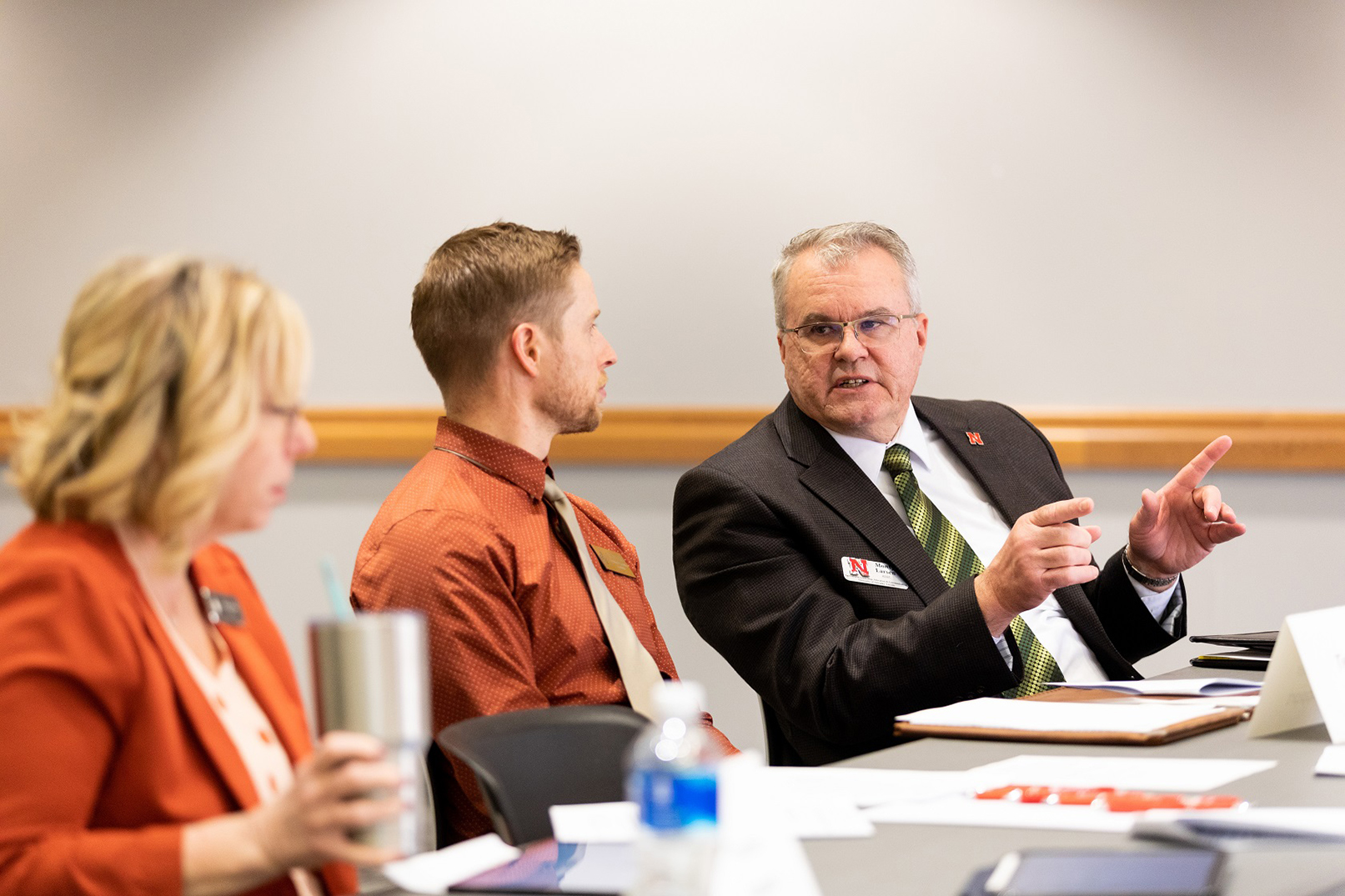
A northeast Nebraska educational partnership that includes the University of Nebraska–Lincoln has taken major steps forward, developing a set of goals to bolster teacher support and expand student learning opportunities in agricultural and natural resources fields. Broad input by member school districts and private industry will be vital for the success of those efforts, the partner organizations agreed during their March 21 summit at Wayne State College.
The gathering was the first in-person session in which the compact’s membership met for strategic planning. Follow-up events this year will include an in-person teacher summit on June 12 at the Haskell Ag Lab in Concord, and meetings of the compact membership via Zoom on Sept. 12 and Nov. 14.
The Northeast Nebraska Agricultural Science and Natural Resources Education Compact, created in 2019 and expanding in membership in 2022, is a first-of-its-kind regional educational partnership for the state. The overarching goal of the compact is to meet the educational needs of youth and lifelong learners in agriculture and natural resources, to meet current and future workforce demands.
“I think it could be very positive for us,” said Brendan Calahan, superintendent of Ponca Public Schools. The Ponca district is small and rural, without a current ag or FFA program, he noted. “As we explore how to get that off the ground, this is the ideal place for us to build those connections and build that network.” The resources and partnerships made possible through the compact can “make sure that any ag program we want to put in place is sustainable for the long term for us.”
“I’m really excited about this compact in bringing thought leaders together from industry and academic institutions,” said Kurtis Harms, marketing director for DNA Genetics and Pillen Family Farms, both based in Columbus. The collaboration and communication enabled by the compact can play an important long-term role in helping companies meet workforce needs, said Harms, who participated in the summit’s discussion group on workforce development.
The compact’s work can make a significant contribution in helping Nebraska retain young people and keep rural communities healthy, he said.
A priority from the summit is to assemble relevant online resources about agricultural and natural resources education, as well as relevant workforce development, into a coherent, easily accessed form. At present, that information is scattered widely among websites for educational institutions, government agencies, businesses and commodity associations.

Creating such a viable online resource can provide teachers with useful instructional information and help students understand the wide range of careers in modern agriculture and natural resources fields, summit attendees said. The University of Nebraska–Lincoln lists more than 300 such career options for students, said Mark Balschweid, professor and head of the Department of Agricultural Leadership, Education and Communication.
Creative online strategies the compact hopes to create for information-sharing and collaborations can be a tremendously important tool for helping small school districts that lack resources and for supporting ag teachers early in their careers, discussion groups agreed.
On a related point, the discussion group on teacher support called for developing creative ways to provide mentoring to ag and technical skills teachers.
“We have a few examples where mentorship is occurring within schools, which is essential,” said Monty Larsen, an ALEC lecturer who provides outreach support for agricultural and skilled technical science educators. “But it’s also worthwhile to maybe have mentorship outside of the school. That way, a young teacher can have a sounding board where they can talk to a teacher in another school district” or have additional online connections to provide support.
Developing such creative solutions are essential if the compact is to effectively help meet the needs of northeast Nebraska’s tribal communities, which lack resources in various ways, summit attendees stressed. To help achieve that goal, the compact’s governance structure and operating culture will need to ensure that “all voices are at the table” in planning and decision-making, attendees said.
Stuart Fischer, outreach and education coordinator for Little Priest Tribal College, said he was encouraged by the summit’s emphasis on addressing the needs of tribal communities.
“This northeast compact is just what it needs to be,” he said. “It needs to be representative of all the people that live in this part of the state.”

The workforce development discussions involved much focus on the constructive role digital badges can play in helping students develop skills and helping employees achieve credentialing in practical work skills. The compact also can help by developing strategies so that such credentialing facilitates an employee’s ability to regularly grow in a range of competencies. Such an approach would enable long-term professional growth over the person’s “education life cycle,” said Ron Loggins, dean of Wayne State’s School of Science, Health and Criminal Justice.
The summit had few representatives from private industry, but it’s crucial for the compact to have robust input from the private sector, attendees stressed. Strong communication and interaction with private companies and commodity associations can help educational institutions stay current on real-world needs and trends, facilitating workforce development, attendees said.
The Institute of Agriculture and Natural Resources at Nebraska will be one of the resources for students and teachers in the compact. The College of Agricultural Sciences and Natural Resources has begun a newsletter that helps compact members understand available resources among the partner organizations, along with events held by the members.
Another IANR asset for the compact is the Haskell Ag Lab, 15 miles north of Wayne, providing experiential learning for students. The 550-acre site includes extensive cropland, farming and ranching facilities, an arboretum, pollinator gardens and beehives.
The compact’s original membership from 2019 consisted of CASNR, Little Priest Tribal College, Nebraska College of Technical Agriculture, Nebraska Indian Community College, Northeast Community College, Wayne Community Schools and Wayne State College.
In March 2022, the compact’s membership expanded to include Educational Service Units 1, 7 and 8 along with these school districts: Ainsworth, Allen, Battle Creek, Boone Central, Crofton, Elkhorn Valley, Emerson-Hubbard, Homer, Laurel-Concord-Coleridge, Neligh-Oakdale, O’Neill, Ponca, South Sioux City, Stanton, Summerland, Umonhon Nation, Walthill, Winnebago, Winside and Wisner-Pilger.
Share
News Release Contact(s)
Related Links
Tags
High Resolution Photos

HIGH RESOLUTION PHOTOS

HIGH RESOLUTION PHOTOS








